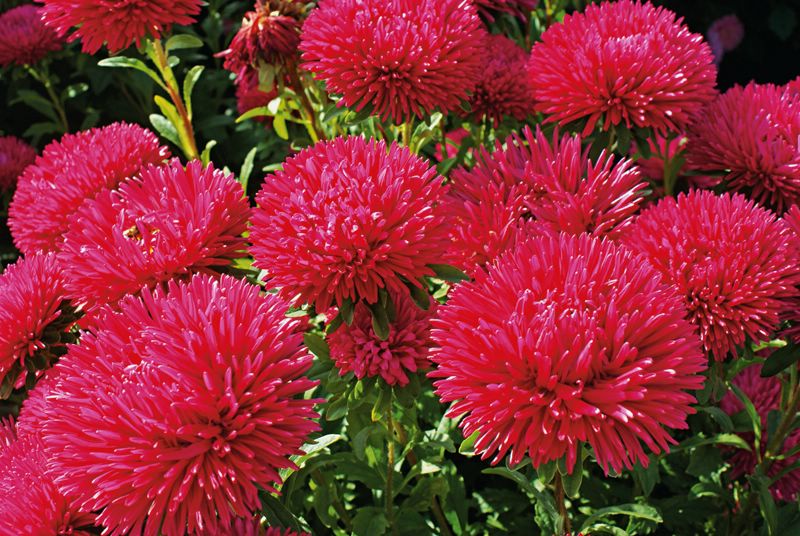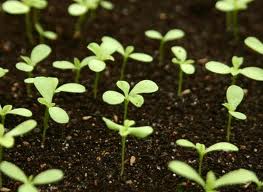Currently, there is almost no vanishing platform without the cultivation of Astra.
Wide popularity and love of landscape designers and simply flower fans, the plant received the diversity of the paints and the forms of their flowers.
Latin name Astra annual - Callistephus chintnsis, and translated from the Greek - "Star". An ancient legend states that Astra is related to the heavenly luminais and originated from star dust. The birthplace of the plant is the southwest of the Far East, China and Korea. Astra hit the XVIII century to Europe and served as an excellent selection material. As a result, many new varieties appeared.
In modern landscaping, hybrid varieties are used, characterized by the size, shape, color and structure of inflorescences, as well as the size of the bush, time and flowering duration.
 Astra an annual assortment is about 4,000 varieties. On decorativeness, the following classes are allocated: tubular, bunch. Transitional (tongue and tubular flowers in inflorescences).
Astra an annual assortment is about 4,000 varieties. On decorativeness, the following classes are allocated: tubular, bunch. Transitional (tongue and tubular flowers in inflorescences).
These classes are divided into types in accordance with the structure of inflorescences. The main classes are ten, among which are simple, semi-world, curly. Crown, radial, needle, tubular, spherical, hemispherical, tiled.
The type of types consists of varieties that usually have beautiful names: Margarita, Pomponny, Victoria, Princess, etc.
Among the ranges there are varieties: terry, non-nucleus, dense and semi-marched. They, in turn, are separated in size of inflorescences: very large, large, medium and small. All varieties can have a different color.
The form of the bush Astra is: pyramidal, oval, columnid, stretched.
For the duration of the time of vegetation and flowering, it is highlighted: early, medium, late.
On the use of Asters are also divided into varieties: Cotic (biscuit), shocking (low or dwarf bushes with multiple inflorescences), universal (medium height of the bushes are suitable for flower and cutting).
Cultivation of Astra annually.
Astra Annual cold-resistant and light-affilome plant. Loves moderate humidity of air and soil. For growing it is best to use soils, close to zero. Does not tolerate manure fertilizer. It is impossible to plant a plant in place after growing gladioles, tulips, carnations. It grows well after Tagtetes and calendula.
Reproduction seeds.
Sowing seeds in a closed soil is held in mid-March, within one month.
It requires nutrient, breathable, holding soil moisture. It is best to use special mixtures on sale. If you yourself prepare the mixture, it is necessary to shed a hot heatman solution (2g / 10 liters of water) before sowing. It will prevent shoots from the disease of the black leg.
Usually it takes 3 g of seeds. After sowing, the seeds are sprinkled with small stroke and water. Boxes are covered with film. Temperature for the emergence of shootouts 18-20 degrees. Seeds are germinated after 3-10 days. At this time, they follow the second time to pour and reduce the temperature to 15 degrees. Next, watering is done as the soil is drying. In the ground, seedlings are seeded at the end of May - early June.
You can produce seeds and in open soil - in spring and autumn.
Care.
Abundant watering during droughts. It does not endure the convergence and proximity to the surface of the groundwater. Feed it with mineral fertilizers or chicken litter on poor soils.
Pests and diseases.
Most often, Astra is an annual fuzarium. For prophylaxis, plants should be sprayed with special mixtures of trace elements. Also, the plant is subject to the following diseases: phytoofluorosis, rust, jaundice. He parasitiate nematodes, notes. Slug, web tick.
With disease and pests it is easy to cope with the help of various means widely represented in the trading network.
Anthurium Andre Transplantation and Care
How and when to prepare clover flowers














 Start a discussion ...
Start a discussion ...